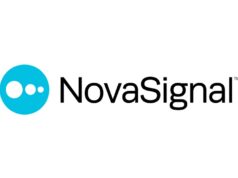 NeuraSignal has announced the publication of positive results from the BUBL clinical study supporting the safety and superior performance of its NovaGuide intelligent ultrasound system in detecting right-to-left shunt (RLS)—often due to a patent foramen ovale (PFO)—in patients with acute ischaemic stroke. The data, published in the journal Stroke, show that the NovaGuide system detected RLS that transthoracic echocardiography (TTE) missed, including detection of large RLS, which typically require intervention to prevent subsequent ischaemic events, that were frequently missed with TTE too.
NeuraSignal has announced the publication of positive results from the BUBL clinical study supporting the safety and superior performance of its NovaGuide intelligent ultrasound system in detecting right-to-left shunt (RLS)—often due to a patent foramen ovale (PFO)—in patients with acute ischaemic stroke. The data, published in the journal Stroke, show that the NovaGuide system detected RLS that transthoracic echocardiography (TTE) missed, including detection of large RLS, which typically require intervention to prevent subsequent ischaemic events, that were frequently missed with TTE too.
“An accurate assessment for RLS is a critical part of evaluating patients with cryptogenic ischaemic stroke. While TTE has long been the most common screening diagnostic for RLS, we know from decades of TCD [transcranial Doppler] experience that TTE falls short as a screening tool,” said Mark Rubin (Edward Hines Jr Veterans Affairs Medical Center, Hines, USA), national principal investigator of the BUBL study. “These study results clearly show that RLS and large RLS are frequently underdiagnosed with TTE, which potentially puts patients at risk for their doctors unwittingly underestimating both their stroke cause and recurrence. These findings, in conjunction with decades of prior studies, support TCD as the superior initial screening test for RLS compared with TTE.
“Importantly, [the findings] also show that robot-assisted TCD can make this superior test more broadly available by eliminating the need for extensive TCD expertise for the type of study conducted—namely a TCD bubble study. TCD expertise is rare, which means most doctors and patients have no idea what TCD is and what it can do for them. The democratisation of technique with robotic and software tools has made TCD, finally, as ‘push button’ as I have seen it in my career so far, which I sincerely hope translates into these advanced diagnostic tools helping patients.”
As outlined by a NeuraSignal press release, the standard of care for PFO screening is TTE—an ultrasound-based approach in which the ultrasound transducer is moved across the chest to create an image of the heart. TTE is widely available but has been shown to have only 45% sensitivity in detecting RLS, the release adds. Transoesophageal echocardiography (TEE), in which the ultrasound transducer is placed in the oesophagus using an endoscope, is the gold standard for PFO diagnosis but it requires sedation and is invasive, increasing the risk to the patient.
In prior studies, TCD has been shown to have high sensitivity (96%) and specificity (92%) for detecting PFO, but its success is highly operator-dependent and there is a limited number of healthcare providers with expertise using this approach, according to NeuraSignal.
The BUBL study was a prospective, single-arm clinical study designed to compare RLS and large RLS detection rates with NovaGuide and TTE in adults who had neurological signs and symptoms of ischaemic stroke, or transient ischaemic attack. Patients in the study were assessed using NovaGuide and TTE with agitated saline contrast bubbles within 30 days of the ischaemic event. A total of 129 evaluable subjects were prospectively enrolled in the study at six clinical sites across the USA. The key study findings are as follows:
- For the primary endpoint of RLS detection, NovaGuide detected RLS in 82 (64%) subjects compared with 26 (20%) subjects with TTE (absolute difference of 43.4%, p<0.001)
- For the secondary endpoint of large RLS detection, NovaGuide detected RLS in 35 (27%) subjects compared with 13 (10%) subjects with TTE (absolute difference of 17%, p<0.001); TTE failed to detect approximately two thirds of the large RLS detected by NovaGuide
- For the secondary endpoint compared against manual TCD (n=21), NovaGuide detected RLS in 18 (85.7%) subjected compared with 12 (57.1%) with manual TCD (absolute difference of 28.6%, p<0.05)
- There were no serious adverse events, which was the primary safety endpoint of the study
- Results using NovaGuide suggest that RLS are frequently underdiagnosed overall
The NovaGuide intelligent ultrasound system was designed to overcome the limitations of existing RLS detection methods. NovaGuide integrates TCD technology with automated robotics and artificial intelligence (AI) to enable autonomous acquisition of ultrasound signals, and provide insight into subtle changes in blood flow to the brain indicative of a wide range of pathologies including RLS.
Earlier in 2023, NeuraSignal acquired the business of NovaSignal—the original developer of NovaGuide technology, which has been cleared by the US Food and Drug Administration (FDA) and also gained Health Canada approval last year.









